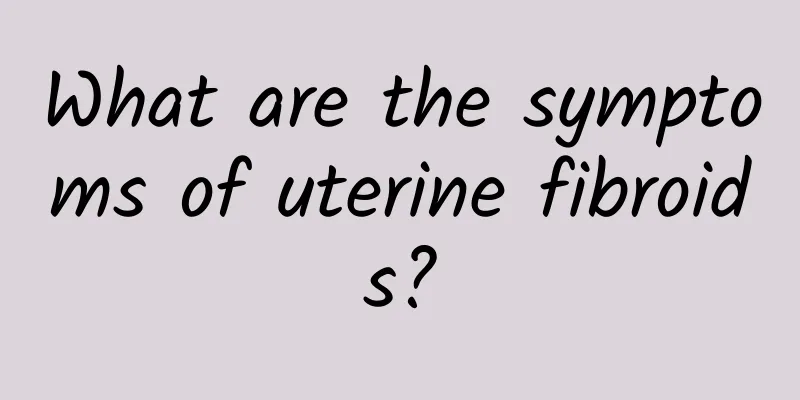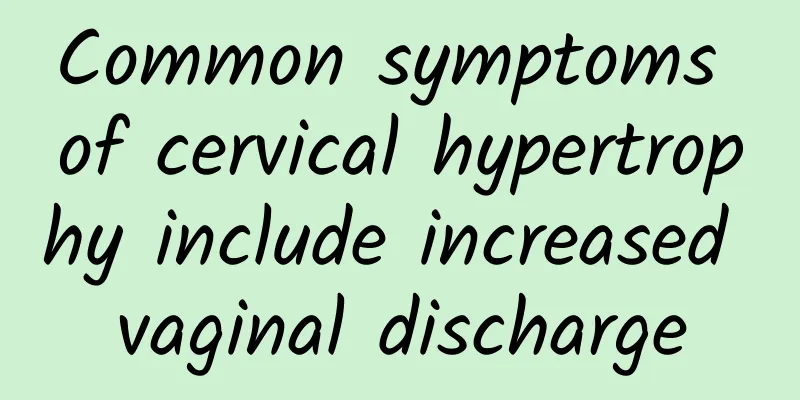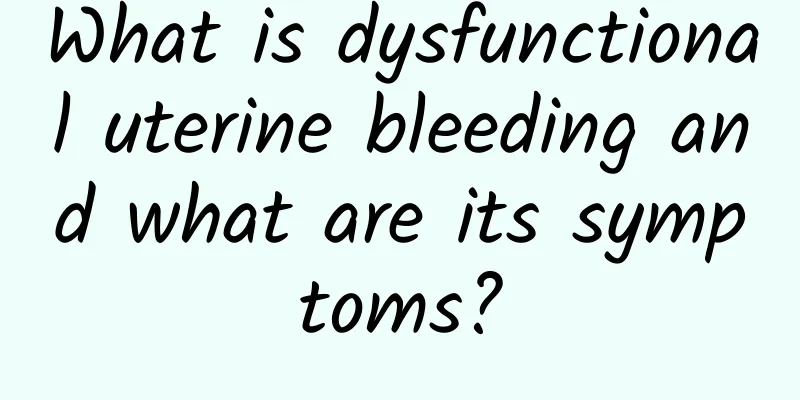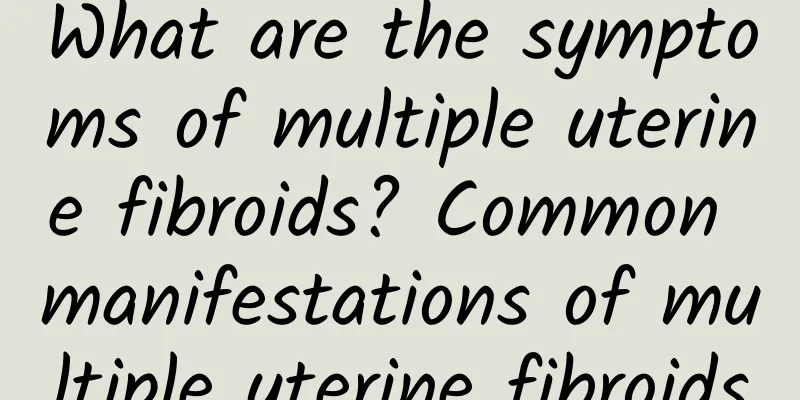What are the symptoms of uterine fibroids?

|
Uterine fibroids have a common symptom of abdominal pain. As the incidence of uterine fibroids is getting higher and higher, it has caused panic among many female friends. Many women worry whether they have uterine fibroids after abdominal pain. So, what are the symptoms of uterine fibroids? Since uterine fibroids mostly occur in women aged 30 to 50, female friends must be aware of the symptoms of uterine fibroids in time, which is very helpful for preventing uterine fibroids. The following are the symptoms of uterine fibroids: 1. Menstrual changes: The most common symptoms are shortened menstrual cycle, increased menstrual volume, prolonged menstruation, irregular vaginal bleeding, etc. 2. Abdominal mass: abdominal distension, swelling in the lower abdomen, accompanied by a feeling of falling. 3. Increased vaginal discharge: Increased vaginal discharge, sometimes with a large amount of purulent and bloody discharge and necrotic tissue discharge with a foul odor. 4. Pain: Generally, patients do not have abdominal pain, but often have lower abdominal swelling, back pain, etc. When the pedicle of the subserosal fibroid is twisted, acute abdominal pain and redness of the fibroid may occur, with severe abdominal pain and fever. It can usually be relieved with Chinese medicine gypsum. 5. Compression symptoms: When the fibroid grows forward or backward, it can compress the bladder, urethra or rectum, causing frequent urination, dysuria, urinary retention or constipation. When the fibroid grows to both sides, it will form a broad ligament fibroid, compressing the ureter or hydronephrosis; if it compresses the pelvic blood vessels and lymphatic vessels, it will cause lower limb edema. 6. Infertility: Fibroids compress the fallopian tubes and cause them to twist, or deform the uterine cavity, hindering the implantation of the fertilized egg and leading to infertility. 7. Secondary anemia: If the patient has excessive menstruation for a long time, it may lead to secondary anemia, with symptoms such as general fatigue, pale complexion, shortness of breath, and palpitations. 8. Hypoglycemia: Hypoglycemia with uterine fibroids is also rare. The main symptoms are low fasting blood sugar, loss of consciousness, shock, and the symptoms completely disappear after glucose injection. After tumor resection, the symptoms of hypoglycemia completely disappear. The above is a description of the symptoms of uterine fibroids. You must have a certain understanding of the symptoms of uterine fibroids. |
>>: What are the symptoms of uterine fibroids? How to use medication for uterine fibroids
Recommend
What should I pay attention to when I have my first menstrual period after an abortion? Is it normal to have a very light menstrual period after an abortion?
Abortion is an operation to terminate pregnancy, ...
Michelle Yeoh paper man! Losing 10 kg to play the role of Aung San Suu Kyi
The movie "In the Name of Love: Aung San Suu...
How to check for adnexitis?
How to check for adnexitis? In fact, many female ...
A must-eat for slimming in autumn! 3-Day Apple Weight Loss Meal
The weather gradually gets cooler in autumn, and ...
How much does abortion pills cost
The price of abortion pills has always been a con...
What incorrect behaviors can cause vaginitis
We know that patients with vaginitis generally kn...
Ding Dang lost 10% of body fat and lost weight. Famous doctor: It is not easy to gain weight again
Ding Dang, known as the national love song queen,...
Peizhen’s husband sculpted a mermaid line! Tuna belly makes you a handsome man
Female artist Pei Zhen, who has been married for ...
Pregnant women should eat small meals frequently and drink 2,000cc of water during the hot summer
For pregnant women with big bellies, the stomach ...
Is intravenous drip effective for pelvic effusion? How to care for pelvic effusion?
Pelvic effusion is a very uncomfortable disease f...
What are the hazards of cervicitis in women? Women must know the 4 major hazards of cervicitis
If cervicitis is not treated in time, it will cau...
Eating raw purple garlic can effectively prevent vaginitis
Vaginitis is a common gynecological disease. It i...
There are some tips to prevent hyperprolactinemia
For hyperprolactinemia, a disease with an increas...
How to treat uterine fibroids 0.60.8?
How to treat uterine fibroids 0.60.8? Uterine fib...
Rumor online: Eating leftover food can cause cancer? Rinse and cook in this way, health will not be lost
Studies have confirmed that "eating overnigh...









